What is a Defibrillator
A defibrillator is an automated device that emits an electrical shock to get the heart beating again in case of cardiac arrest. These devices are not only available in ambulances; you can easily find them in public spaces like train stations. The device is also known as a defib or an AED (Automated External Defibrillator)
How To Use a Defibrillator
Anyone who has the basic knowledge of first aid can use a defibrillator; turning the machine on will give clear voice commands. The device will give step-by-step instruction
Step-by-step guide on how to use a defibrillator
If the defibrillator is not within your reach start CPR, as soon as you have access to the device let it monitor the person’s heart’ rhythm
Step 1
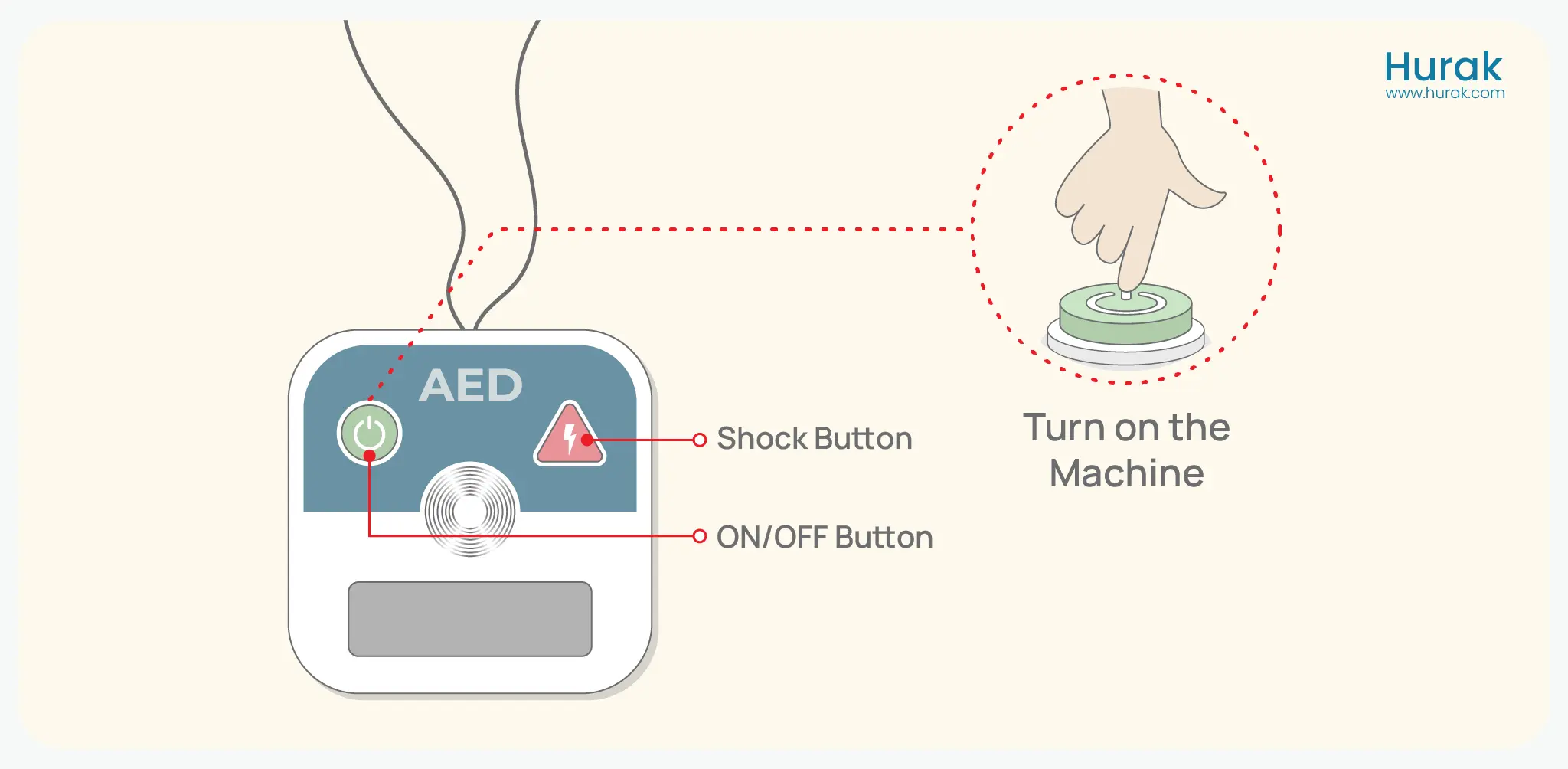
First, press the green button to switch on the defibrillator and then follow the instructions.
Step 2
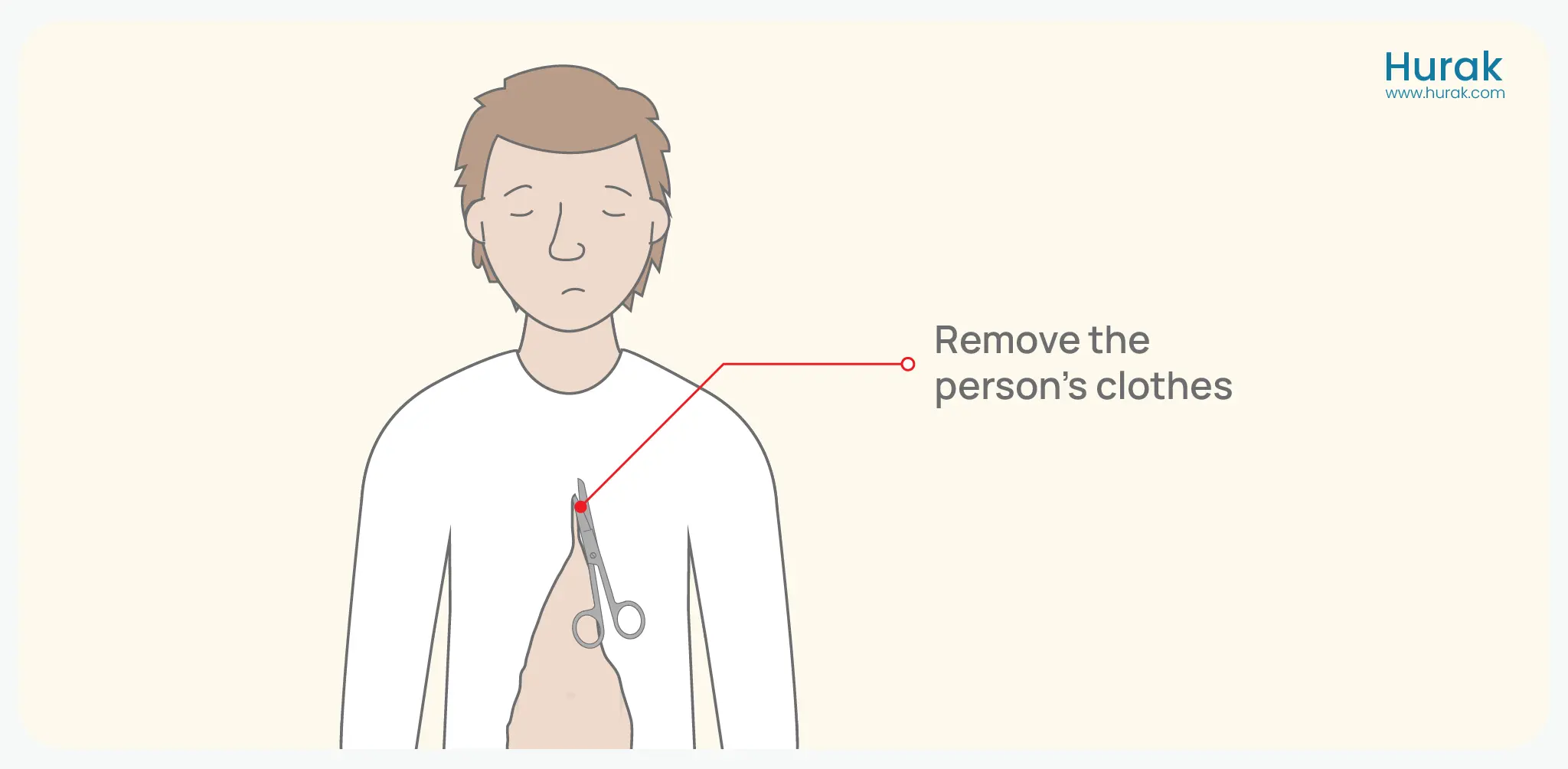
Remove the person’s clothing from above the waist. This may include removing the bra, considering the victim is wearing one, the underwire might cause problems. You can do this by cutting off the straps using scissors, which you will find amongst other useful tools in the Defibrillator pack. If this makes you uncomfortable, just remember that this is a life-and-death situation.
Step 3
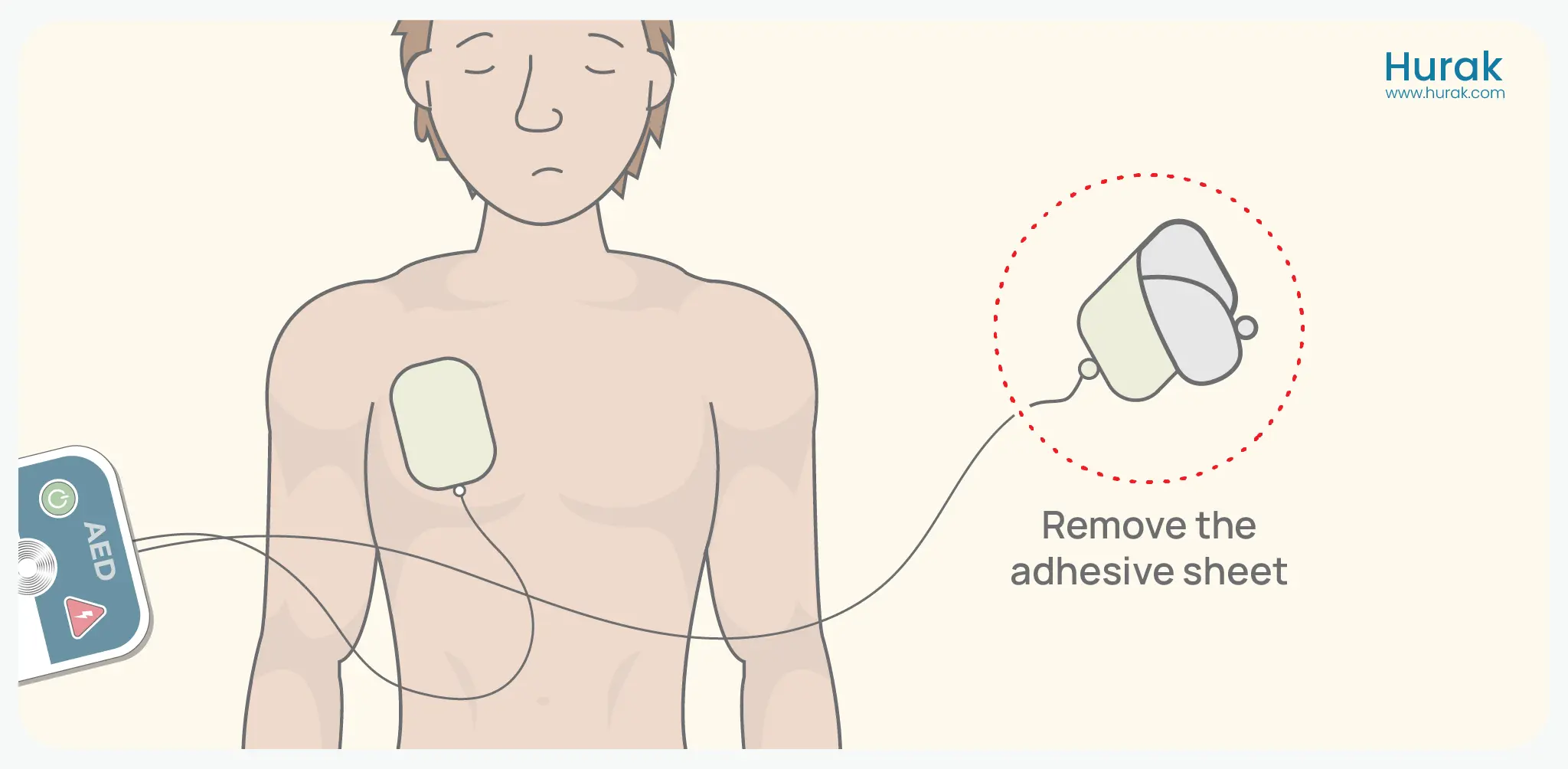
Next, peel off the pads and place them on the person’s skin, attaching one pad to each side of the chest.
Step 4
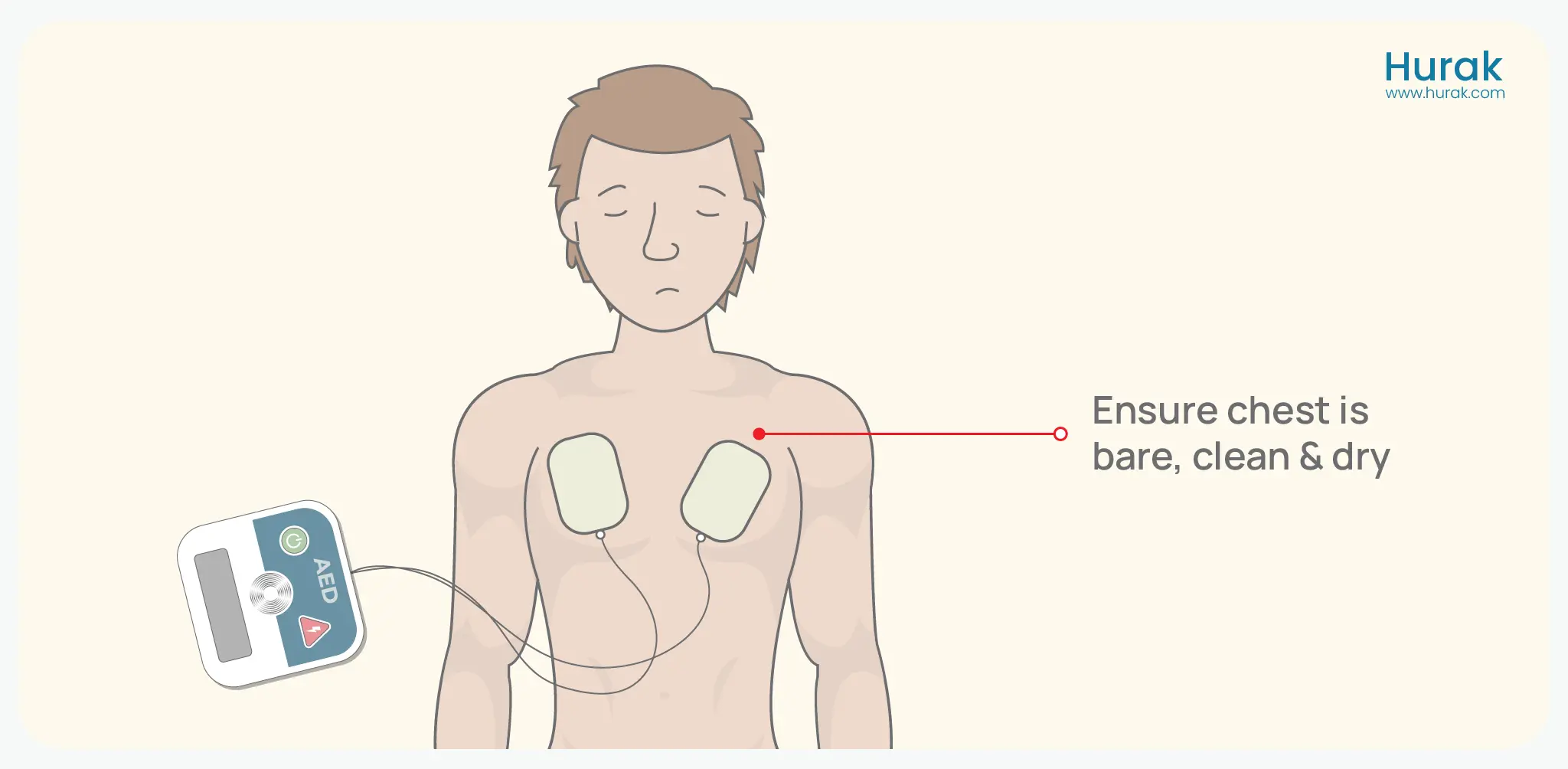
Now that the sticky pads are secure and properly placed on the victim, you must stop CPR. As mentioned above if the person is wearing a bra, you must remove it by slipping the straps down or cutting it off. Most defibrillator packs have tools like scissors to help you do this. It might feel odd or embarrassing, but do not let that stop you. Remember, this is a life-or-death situation.
Step 5

The device will monitor the person and decide whether a shock is needed. If the device detects that a shock is necessary, it will instruct you to press the ‘shock’ button. Once you press the button, the defibrillator will shock the person. You should not touch the person while they are being shocked
Step 6
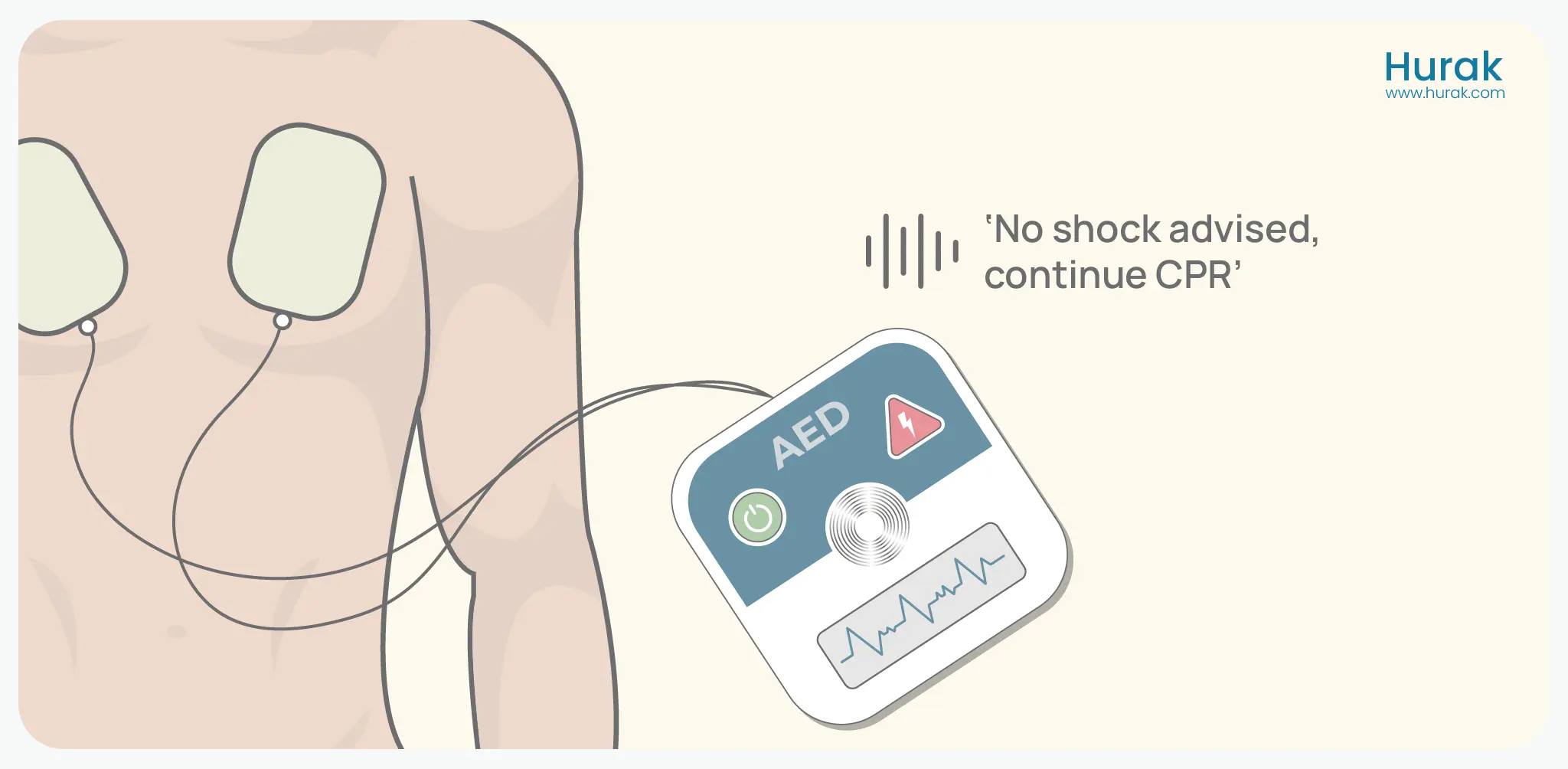
Once the shock has been given, the device will instruct you on whether to continue CPR. The AED may give a voice command such as ‘No shock advised, continue CPR’
Step 7
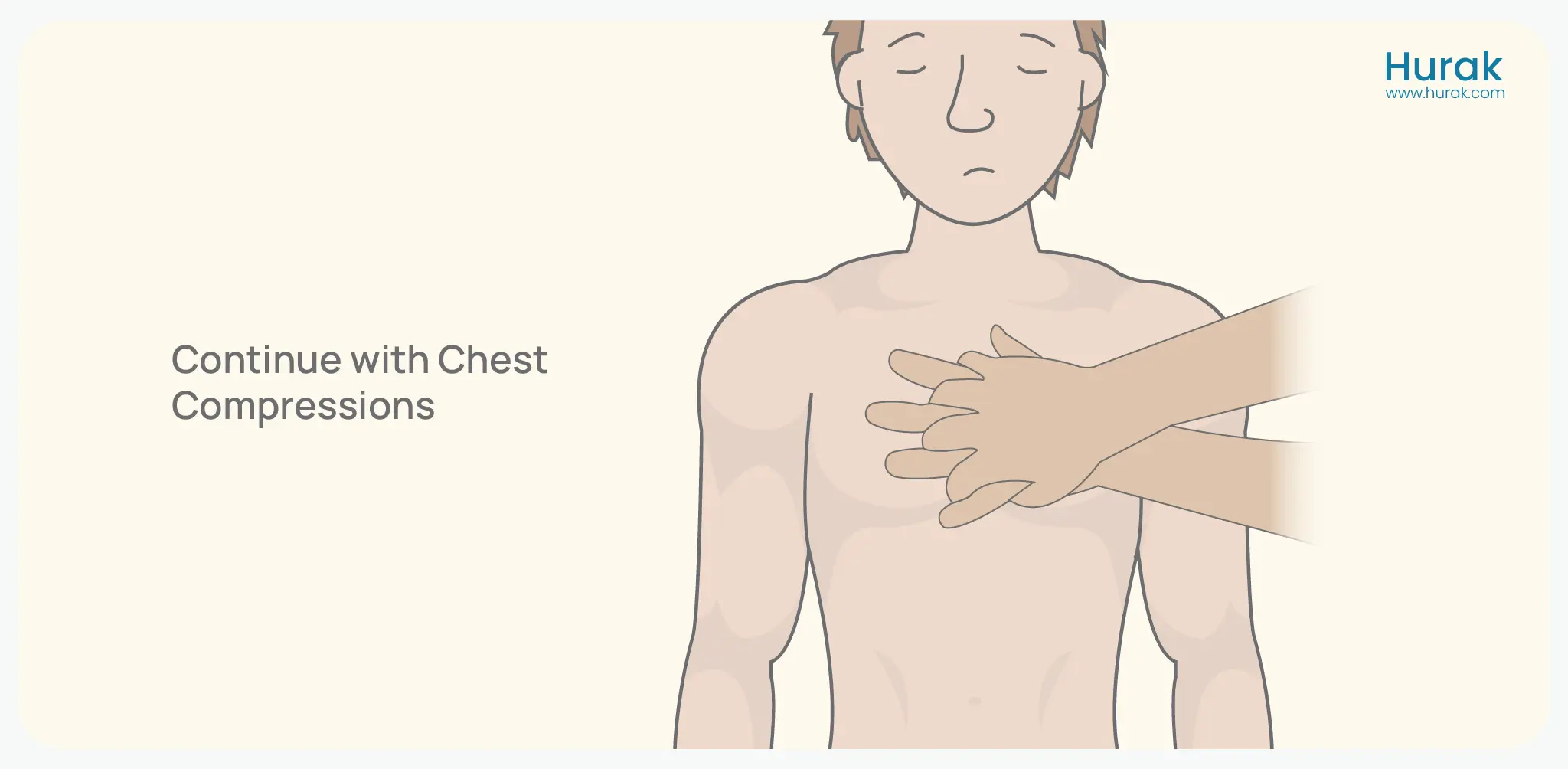
If the command for CPR is given to you by the defibrillator, then continue with chest compressions. Stop only if the device gives a voice command instructing you to stop. It may do so to analyze the heartbeat again. You may stop with chest compressions if the person shows signs of life.

What does a defibrillator do, learn how a defibrillator works
The proper use of an AED, in conjunction with knowledge of CPR and first aid, can save lives. Prioritizing the safety of others is essential. Equip yourself with these vital lifesaving skills. Check out our First Aid course and get certified today!
FAQs
What comes first, CPR or defibrillator?
If the Defibrillator is not within your reach, the first step you need to take is to start CPR. As soon as you have a device, use it, let it analyze the heart’s rhythm, and let it instruct you with voice commands on what needs to be done. If the defibrillator suggests that a shock be given to the person, then follow the instructions and proceed.
What not to do with a defibrillator?
Make sure you don’t have headphones dangling around your neck, and make sure you don’t put mobile phones or cordless phones, MP3 players or any other electric device within 6 inches of the defibrillator
What is the AED 3-minute rule?
When a person collapses, every minute’s delay decreases their chances of survival by 10 percent. To control the situation, it is recommended that you shock the victim within the first 3 minutes of their collapse. Research indicates that victims who receive a shock within the first 3 minutes are most likely to survive.




